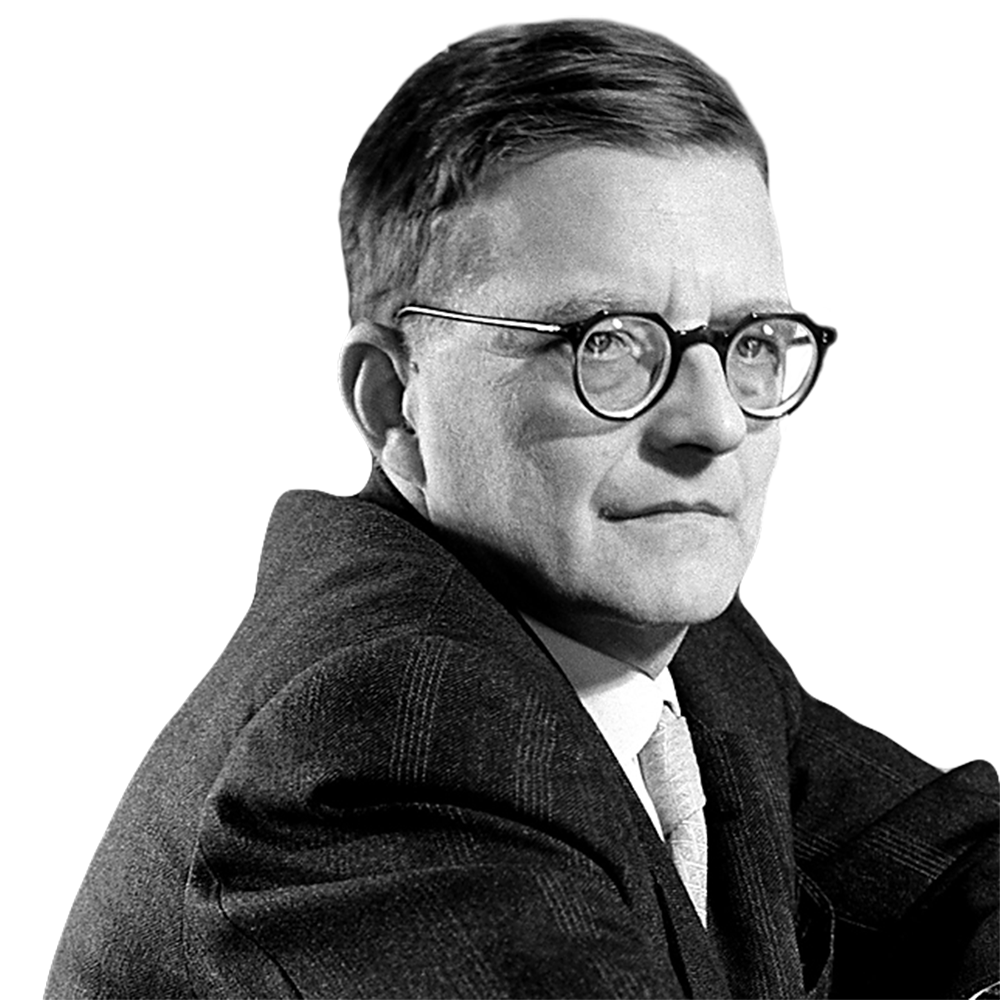
|
Cello Concerto No. 1 in E-flat major, Op. 107 Allegretto |
Composed: Estimated length: |
|
Born on September 25, 1906, in Saint Petersburg, Russia; Died on August 9, 1975, in Moscow, Russia |
|
|
First performance: October 4, 1959, with Mstislav Rostropovich as soloist and Yevgeny Mravinsky conducting the Leningrad Philharmonic in Leningrad. |
|
|
First Nashville Symphony performance: February 7, 2013, with Music Director Giancarlo Guerrero conducting at Schermerhorn Symphony Center. |
|
The legendary cellist Mstislav Rostropovich was a student at the Moscow Conservatory when he first met Dmitri Shostakovich. The encounter would be “a determining factor in my life,” as Rostropovich later recalled. The two musicians became lifelong friends, and in 1959 Shostakovich decided to write a concerto for his younger colleague. Only once before the Second World War had he ventured into the concerto format—with the Piano Concerto No. 1 of 1933 for himself as pianist (and featuring a prominent solo trumpet part).
Shostakovich’s friendships with extraordinary performers inspired him to return to the medium for two pairs of concertos for string instruments: two concertos for the violinist David Oistrakh and two cello concertos tailor-made for Rostropovich’s signature combination of lyricism and dramatic intensity. The Cello Concerto No. 1 was an immediate success when Rostropovich gave the premiere in 1959 in Saint Petersburg (known in Soviet times as Leningrad). Rostropovich famously memorized his part within four days.
Considered one of the finest achievements in the cello repertory from the 20th century, the Cello Concerto No. 1 includes a famously innovative treatment of the main cadenza usually expected to occur in the opening movement. Here, it is placed at a focal point that bridges the way to the finale.
Shostakovich in fact treats this cadenza as a separate movement, so the entire work can be described as having four movements, with the last three joined together without a break. The ensemble’s sonority is also distinctive because Shostakovich does not use brass but assigns a prominent role to a single horn, who acts as a sort of alternate soloist. At key moments, the timpanist becomes a central player as well. Otherworldly contributions from the celesta at the end of the slow movement add an almost halo-like effect to the cello’s ethereal sounds.
WHAT TO LISTEN FOR
A spare thematic motto of four notes on the cello opens the piece. It recalls a similar idea Shostakovich used to “spell” his initials in other works. This motto has an obsessive character than can even suggest a sense of paranoia. The biographer Laurel Fay writes that the idea comes from a film he had scored in 1948—the year in which Shostakovich faced his second denunciation by Soviet authorities; the film depicts a “procession to the execution.” The movement’s march-like motion darkens with the menacing contributions of timpani and contrabassoon.
The warm sounds of the strings, to which the solo horn adds its own flavor, open the slow movement peacefully. After a climax is reached, Shostakovich returns to the haunting music from the beginning of the movement and then fades into the extensive cadenza already mentioned. Starting in a state of profound meditation, the soloist progressively accelerates, using plucked chords to punctuate the different sections.
This leads directly into the finale, a rondo accentuated by the timpani’s rumble. Here Shostakovich disguises fragments from a Georgian folk song that was known to be a favorite tune of Stalin. The nervous quality of the first movement at last transforms into frenzy, and the opening four-note motif recurs with the eerie certainty of fate.
In addition to solo cello, scored for piccolo, 2 flutes,
2 oboes, 2 clarinets, 2 bassoons, contrabassoon, horn, timpani, celesta, and strings
− Thomas May is the Nashville Symphony's program annotator.